Our Potassium Iodide Starch test paper detects available iodine, chlorine and peroxides in solution. Lower levels react with the strip at 5 – 10 ppm. Iodine requires approximately 60 seconds to react, and initial reactions show a slight blue color, while higher concentrations turn the strip from dark blue to purple.
The Potassium Iodide Starch test paper contains potassium iodide as an active ingredient. In the presence of an oxidant, such as peroxide or chlorine, iodide is converted to iodine which then binds to starch molecules in the paper forming the blue to purple color. The color is much less intense than other more complex redox indicators.
Our Chlorine Test Paper is a similar paper with a slightly modified color chart. Thus, it works in a similar manner. The paper detects free chlorine in solution from 10-200ppm, with concentrations gradually turning a darker and darker purple as they increase.

Both test papers are somewhat qualitative, meaning, they are not as exact as our plastic test strips. The color charts are somewhat difficult to distinguish, as they are just darker shades of one color, versus our plastic strips which are most often different colors.
These papers are primarily used only as potency test strips for bleach sanitizing solutions in food and other chemical industries. The detection sensitivity of the paper for peroxide or chlorine is poor, so when a customer tries to use them for an application that requires more exact results, we discourage the use of the product and direct them towards one of our plastic strips instead.
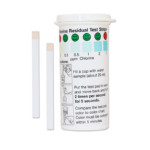 When used for residual chlorine testing, the sensitivity of the paper is only between 5 and 10ppm, which can even be difficult, if not near impossible to distinguish. For residual chlorine testing, we recommend our plastic Residual Chlorine test strip (0-5ppm) or our Low Level Chlorine test strip (0-10ppm). These strips will provide more accuracy and are meant for residual chlorine testing. Keep in mind, however, these are still colorimetric test strips and are not appropriate for all residual chlorine testing.
When used for residual chlorine testing, the sensitivity of the paper is only between 5 and 10ppm, which can even be difficult, if not near impossible to distinguish. For residual chlorine testing, we recommend our plastic Residual Chlorine test strip (0-5ppm) or our Low Level Chlorine test strip (0-10ppm). These strips will provide more accuracy and are meant for residual chlorine testing. Keep in mind, however, these are still colorimetric test strips and are not appropriate for all residual chlorine testing.
We do not have a residual peroxide test strip. The lowest range we have is the Peroxide 0-100ppm test strip. It does have color blocks at 0, 1, 3 and 10ppm, but the lower values can sometimes be difficult to distinguish.
Similarly, the Potassium Iodide starch test papers and chlorine test papers are not suitable for use as a potency test for bleach disinfection solution. For disinfection, the chlorine level of the bleach solution is much higher than that in a sanitizing solution. In a bleach disinfection solution, the chlorine levels range from 500 to 5,000ppm. In a sanitizing solution, the chlorine levels are usually around 100 to 300 ppm. At 100 ppm, the potassium iodide starch test paper will turn to dark blue/black and lose the capability to distinguish chlorine levels of 100 and 500 ppm, let alone 5,000 ppm.
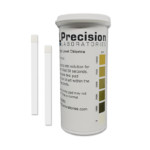 Additionally, when testing high levels of chlorine, if the strip is still white after dipping it into the solution, you may be seeing the “bleaching out effect.” At high concentrations of bleach, the available chlorine will overwhelm the indicators used in the strips. If this happens, instead of developing a purple color, the strip will very quickly turn to white. The best indicator of this effect is the presence of a thin blue line on the strip separating the wet portion from the dry portion of the strip.
Additionally, when testing high levels of chlorine, if the strip is still white after dipping it into the solution, you may be seeing the “bleaching out effect.” At high concentrations of bleach, the available chlorine will overwhelm the indicators used in the strips. If this happens, instead of developing a purple color, the strip will very quickly turn to white. The best indicator of this effect is the presence of a thin blue line on the strip separating the wet portion from the dry portion of the strip.
We have higher level chlorine test strips available on plastic for increased testing accuracy. These tests include ranges of 0-300ppm, 0-1000ppm, 0-2000ppm, up to 0-10000ppm. These are the best strips to use for testing higher level bleach disinfection and sanitizing solutions. Similarly, we have high level peroxide test strips with ranges of 0-400ppm and 0-5000ppm.


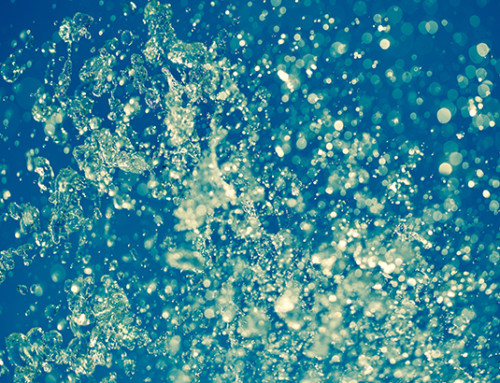
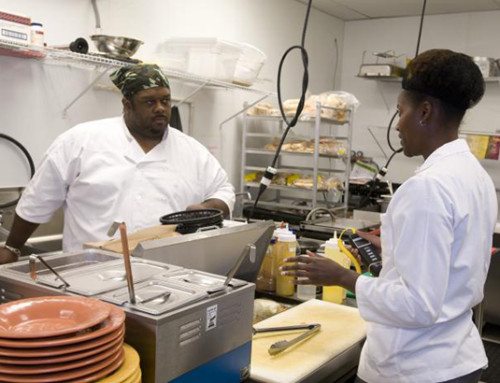
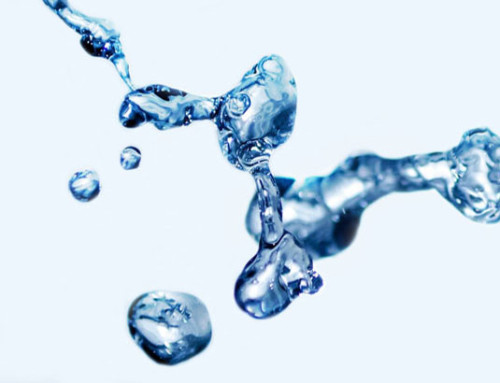

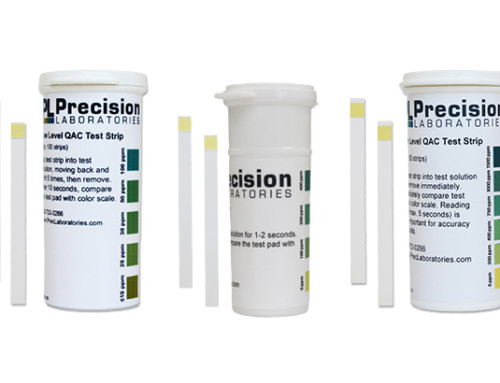
Leave A Comment